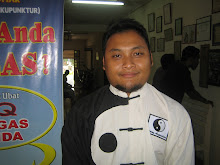Saturday, May 14, 2011
New method Offers Safer CT Scanning For Children
New Method Offers Safer CT Scanning for Children
By Medimaging International staff writers
A Swedish research team has developed a method that allows the lowest possible dose of radiation for children having a computed tomography (CT) scan while still obtaining good image quality, new research revealed.
CT imaging is a sophisticated form of X-ray scanning that generates images that are extremely detailed and very useful in diagnosing patients. If the dose of radiation is lowered too far, however, the scans become blurred and there is a risk of missing small details.
The author of the thesis, medical physicist Dr. Kerstin Ledenius, from the department of radiophysics at the University of Gothenburg’s Sahlgrenska Academy (Sweden), has studied and assessed a new method together with radiologists, nurses, and medical physicists at the Queen Silvia Children’s Hospital (Gothenburg, Sweden). This method succeeds in combining the lowest possible dose of radiation with what radiologists consider to be sufficiently high image quality for a correct diagnosis. In various studies, the researchers also looked at the image quality of CT scans of the brains and stomachs of children in various age groups from birth to 17 years.
Computer manipulation of images from previous scans was utilized to simulate various reductions in radiation dose. The investigators then evaluated the findings of the simulation and decided whether exposure to radiation should be adjusted for the next patient in the same situation, and if so by how much. This made it possible to find the lowest exposure capable of generating a sufficiently good image for each type of examination performed.
“Adjusting exposure is important, as a small patient does not need the same exposure as a large one,” explained Dr. Ledenius. “Children also differ anatomically from adults, which affects the image quality needed.”
The method is already in use at the Queen Silvia Children’s Hospital, and Dr. Ledenius hopes that more hospitals will follow suit. He concluded, “Our method ensures the best possible CT scanning, combining images of high quality with the least possible exposure to radiation.”
Related Links:
Sahlgrenska Academy
Queen Silvia Children’s Hospital
By Medimaging International staff writers
A Swedish research team has developed a method that allows the lowest possible dose of radiation for children having a computed tomography (CT) scan while still obtaining good image quality, new research revealed.
CT imaging is a sophisticated form of X-ray scanning that generates images that are extremely detailed and very useful in diagnosing patients. If the dose of radiation is lowered too far, however, the scans become blurred and there is a risk of missing small details.
The author of the thesis, medical physicist Dr. Kerstin Ledenius, from the department of radiophysics at the University of Gothenburg’s Sahlgrenska Academy (Sweden), has studied and assessed a new method together with radiologists, nurses, and medical physicists at the Queen Silvia Children’s Hospital (Gothenburg, Sweden). This method succeeds in combining the lowest possible dose of radiation with what radiologists consider to be sufficiently high image quality for a correct diagnosis. In various studies, the researchers also looked at the image quality of CT scans of the brains and stomachs of children in various age groups from birth to 17 years.
Computer manipulation of images from previous scans was utilized to simulate various reductions in radiation dose. The investigators then evaluated the findings of the simulation and decided whether exposure to radiation should be adjusted for the next patient in the same situation, and if so by how much. This made it possible to find the lowest exposure capable of generating a sufficiently good image for each type of examination performed.
“Adjusting exposure is important, as a small patient does not need the same exposure as a large one,” explained Dr. Ledenius. “Children also differ anatomically from adults, which affects the image quality needed.”
The method is already in use at the Queen Silvia Children’s Hospital, and Dr. Ledenius hopes that more hospitals will follow suit. He concluded, “Our method ensures the best possible CT scanning, combining images of high quality with the least possible exposure to radiation.”
Related Links:
Sahlgrenska Academy
Queen Silvia Children’s Hospital
Subscribe to:
Post Comments (Atom)





No comments:
Post a Comment